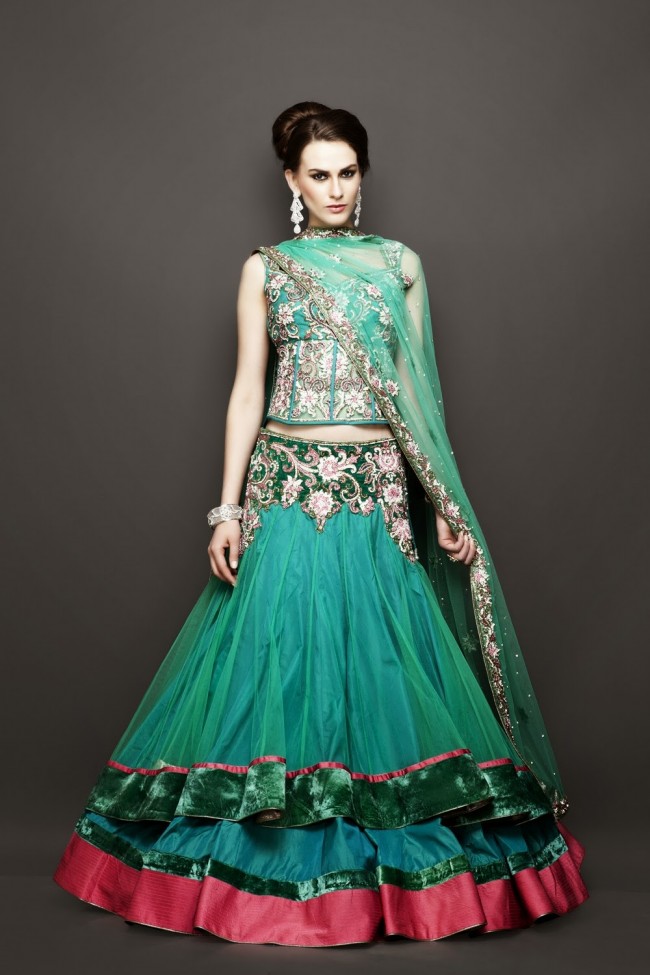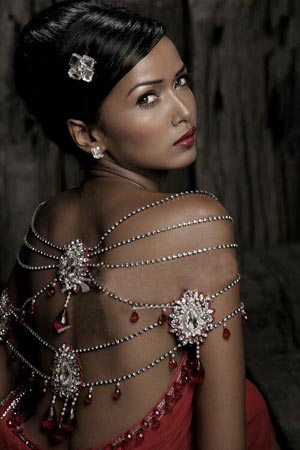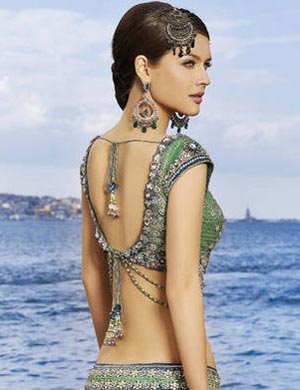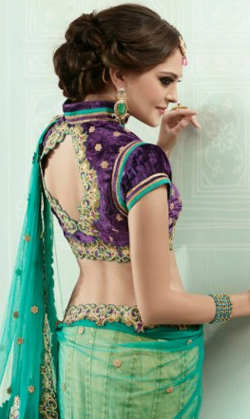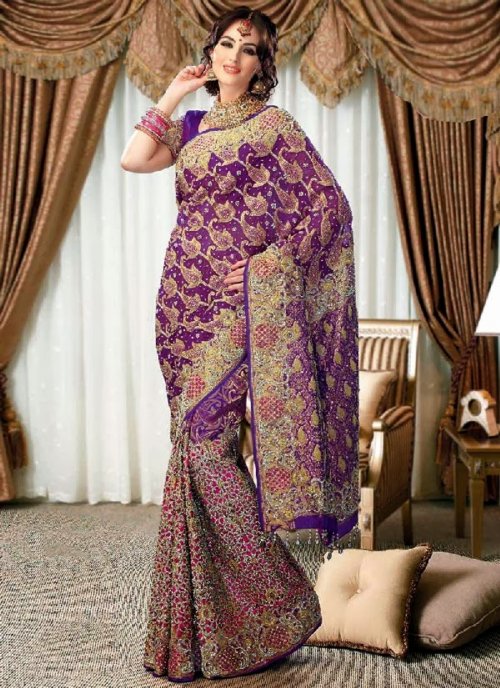About Blouses Designs
Source Link Google.com.pk
A blouse is a loose-fitting upper garment that was formerly worn by workmen, peasants, artists, women and children. It is typically gathered at the waist (by a waistband or belt) so that it hangs loosely ("blouses") over the wearer's body. Today, the word most commonly refers to a woman's shirt but can also refer to a man's shirt if it is a loose-fitting style (e.g. poet shirts and Cossack shirts). Traditionally, the term has been used to refer to a shirt which blouses out or has an unmistakably feminine appearance.The term is also used for some men's military uniform jackets.Blouse is a loanword to English from French: blouse means "dust coat".[clarification needed] It possibly was brought back from their travels by French Crusaders.[clarification needed] They moved on their armor a so-called "p(e)lusisian shirt", a blue-colored gowns to the dust, which had its name from the Egyptian town of Pelusium.[clarification needed] The derivation may also be from "wool", blouso "short wool" and blos, blouse "deprived, naked" taken off (Provençal dialect). It is first officially noted in 1828, from French blouse ("a workman's or peasant's smock"), of obscure Occitan. Blouses (pronounced blouse or blooze) are historically a cask style, mostly mail-like garment, that were rarely part of the fashionable woman's wardrobe until the 1890s. Before that time, they were occasionally popular for informal wear in styles that echoed peasant or traditional clothing, such as the Garibaldi shirt of the 1860s. During the later Victorian period, blouses became common for informal, practical wear. A simple blouse with a plain skirt was the standard dress for the newly expanded female (non-domestic) workforce of the 1890s, especially for those employed in office work. In the 1900s and 1910s, elaborate blouses, such as the "lingerie blouse" (so-called because they were heavily decorated with lace and embroidery in a style formerly restricted to underwear) and the "Gibson Girl blouse" with tucks and pleating, became immensely popular for daywear and even some informal evening wear. Since then, blouses have remained a wardrobe staple and since then, so by now blouses have not ceased to be fixed in the "popular cloakroom" style.Blouses are often made of cotton or silk cloth and may or may not include a collar and sleeves. They are generally more tailored than simple knit tops, and may contain feminine details such as ruffles, a tie or a soft bow at the neck, or embroidered decorations. Tailoring provides a closer fit to the wearer's shape. This is achieved with sewing of features such as princess seams or darting in the waist and/or bust. Blouses (and many women's shirts with buttons) usually have buttons reversed from that of men's shirts (except in the case of male military fatigues). That is, the buttons are normally on the wearer's left-hand and the buttonholes are on the right. The reasons for this are unclear, and while several theories exist none have conclusive evidence. Some suggest this custom was introduced by launderers so they could distinguish between women's and men's shirts. One theory purports that the tradition arose in the Middle Ages when one manner of manifesting wealth was by the number of buttons one wore. Another that the original design was based on armour which was designed so that a right-handed opponent would not catch their weapon in the seam and tear through, and also that a person could draw a weapon with their right-hand without catching it in a loose seam of their own clothes. Female servants were in charge of buttoning their mistress's gowns (since the buttons were usually in the back). They tired of attempting to deal with buttons that were, from their point of view, backwards and as such they started reversing the placement when making or repairing them. Another possible reason is so men can easily undo blouses as, from the front, buttons are on the same side as a man's shirt. One other theory is that women were normally dressed by their maids, while men dressed themselves. As such, women's blouses were designed so it could be easily buttoned by the maid but that of men were designed so it could be easily buttoned by the person wearing it. Although in all the cases proposed the reasons for the distinction no longer exist, it continues out of custom or tradition. While most women prefer to have the top button open for better comfort, some blouses made for women have looser necklines so the top button can be fastened without compromising comfort, but giving the same stylish appearance.







